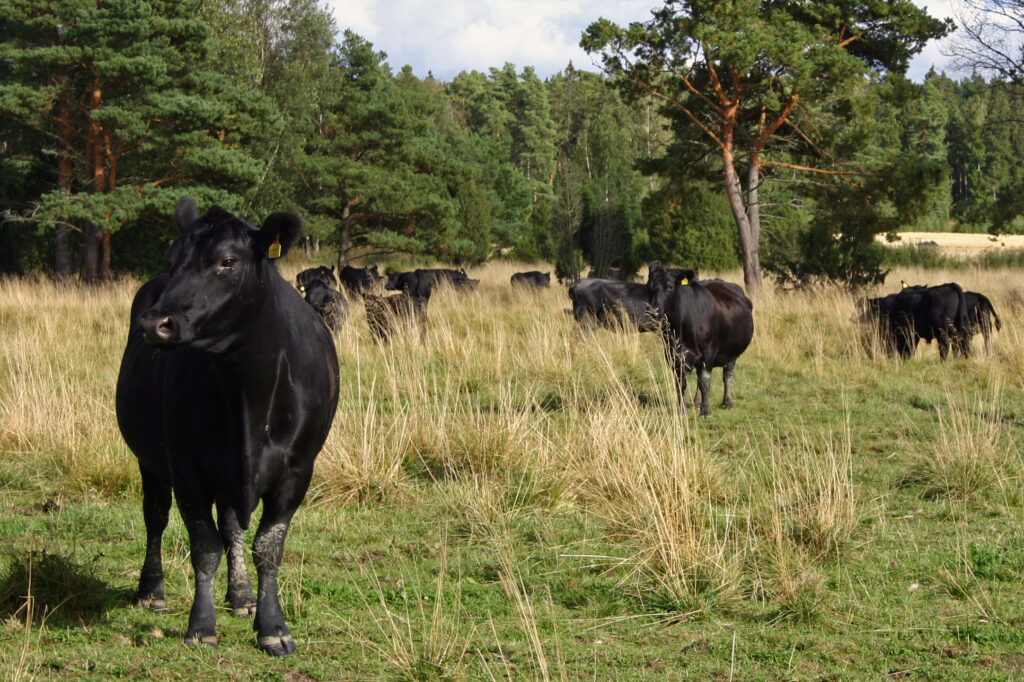Woodland pastures return to rural landscape

The multiple use of forests includes outdoor activities and recreation – for cows and sheep, too. The rehabilitation of traditional wooded landscapes brings livestock back to woodland pastures. At the same time, habitats and endangered species will be better protected.
Every Finn who spent their childhood in the countryside during the 1960s will remember the mottled cows grazing under the trees. Since then, those woodland pastures of the old farms have disappeared. Formerly covering hundreds of thousands of hectares, they have now shrunk to a few thousand.
The disappearance of the woodland pastures and other traditional landscapes such as coastal meadows is a threat for many species. Two species that the restoration of pastures could save are the rare Lesser butterfly-orchid (Platanthera bifolia) and the protected Elder-flowered orchid (Dactylorhiza sambucina). Many birds will benefit if the shores of waterways are restored to pasture.
The Forestry Development Centre Tapio and WWF Finland have worked to awaken a new interest in woodland pastures. The four-year project, ending this year, is called ‘Restoring traditional wooded landscapes by grazing’.
The project is supported by the Forest Biodiversity Programme Metso, whose purpose is to encourage the family forest owners in southern Finland to protect their forests on a voluntary basis. In addition, the pastures are eligible for agricultural aid.

Manure helps annual rings grow wider
On the Vapola organic farm in Uusikaupunki, the restoring of overgrown traditional landscapes started more than ten years ago, as the farm was handed over to the current generation of owners. Cows and sheep graze in the forest pastures, coastal meadows and islands belonging to the farm.
The aim of restoring the traditional pastures was clear from the beginning: improving animal welfare. “You can really see how happy the cows are getting back to the pastures after winter. What is more, the landscape recovers. The pastures literally burst into bloom,” says Mr. Jyrki Ankelo, the farmer at Vapola.
Havingt the livestock graze in the woodland pastures also has an impact on the annual rings of trees. In particular, pine benefits from cohabitation with the black Aberdeen Angus cows.
The traditional wooded landscapes were originally created by slash-and-burn cultivation, grazing and mowing, and the animals look after the current natural values, but pastures still require a lot of work by humans. At Vapola, the farmer must mow his pastures every autumn at the latest. Forestry work is done mainly in the winter and the fences are repaired during the spring.
Pasture dates and meadow meat
The same owner does not necessarily own both forest and cattle suitable for this type of grazing. Tapio and WWF have invited forest owners and farmers to meet each other on ‘pasture dates’. On these dates, the participants have also learned how to establish and restore woodland pastures.
“The pasture dates led to great collaboration. There is a lot of interest in Finland in the concept, and we really hope it will also be adopted in other areas,” says Ms. Airi Matila, forestry expert at Tapio.
One goal of the project was to set criteria for Finnish meadow meat, or meat produced in natural pastures. One of the criteria is that more than half of the pasture must be natural, that is, the animals must graze freely in a natural environment at least half of the grazing season.
Meadow meat is still waiting for certification, but it could very well become a new trend. It responds to demand from consumers who appreciate ethical and local food.
“The woodland pastures project combines the multiple use of forests, the conservation of natural values and the production of ethical local meat,” is how Matila sums it up.
The Forestry Development Centre Tapio
Kirjoita kommentti